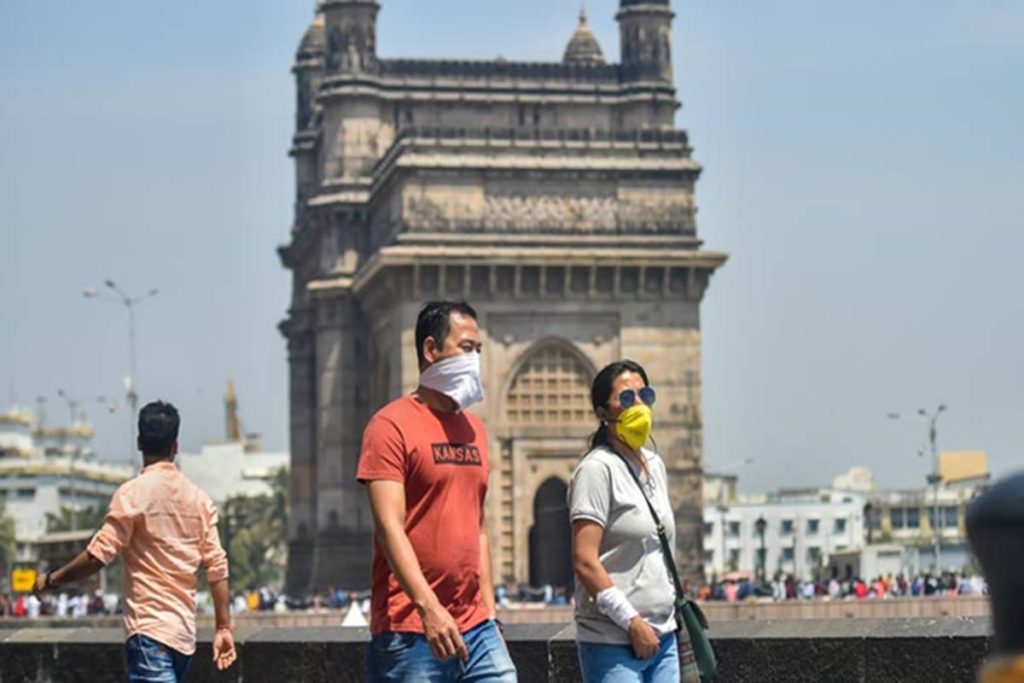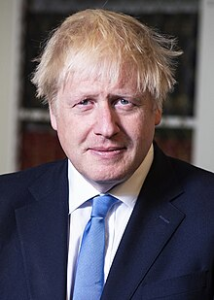Ravi Duggal
Pandemics are not new to Mumbai, the financial and commercial capital of India. The 1896−97 bubonic plague, which originated from China and Hong Kong and came to Bombay (now Mumbai) via ships, claimed over 10,000 lives in Bombay in the first six months and by 1905 had claimed more than 10 lakh lives across India. Mill workers constituted 80,000 of the total 8,50,000 population of the city. Forced to face harassment under plague control measures, which involved sanitisation, quarantine, and separation of sick family members in poor conditions and even destruction of their dwellings, they resorted to striking a number of times in early 1897. Within three to four months of the start of the plague 4 lakh people, including many mill workers, fled from Bombay to their villages, pushing the city into a severe economic crises (Sarkar 2014).
While mills did not shut down completely, they had to reduce production drastically as labour supply dwindled. The mill owners’ association under the leadership of Jamsetji Tata attempted to break the workers’ unity by importing labour from North India, which was reeling under the famine of 1896, but soon realised that this would not work. Many mill owners thus adopted the strategy suggested by Nowrosjee Wadia of building a bond between the employer and the employed through provision of housing, and better working and living conditions (Sarkar 2014). This brought back workers to Bombay even though the plague had become endemic and only disappeared during World War I.
However, towards the end of the war, the Spanish Flu or Bombay Fever (H1N1 virus) hit the city in June 1918 carried by the returning troops from Europe. By August, it had spread across India, killing an estimated 14–17 million people, about 5% of the country’s population. “In Mumbai, almost seven-and-a-half times as many lower-caste Indians died as compared to their British counterparts—61.6 per thousand versus 8.3 per thousand,” and in between were the Muslims at 19.2, other caste Hindus at 18.9, Indian Christians at 18.4, Jews at 14.8, Eurasians at 11.9 and Parsees at 9.0 per 1,000 (Chhun 2020). The Bombay Presidency was the worst affected with a mortality rate of 54.9 per 1,000 and in the spread across the country the railways played a prominent role (Chandra and Kassens-Noor 2014). So, clearly, travel played an important role in the spread of the disease and the larger impact was on the poor and socially unprivileged sections of the population.
In more recent times, the severe acute respiratory syndrome (SARS) in 2003 and H1N1 from 2009 onwards reveal similar trajectories of how the pandemic played out and became endemic. While the spread of SARS 2003 in India was insignificant, the H1N1 attack was quite severe with 20,604 cases and 1,763 deaths in 2010, having a case fatality rate of 8.55%. Maharashtra accounted for one-third of the cases and 38% of deaths with a case fatality of 9.8%. H1N1 is now endemic and strikes the country each year (Table 1).
Maharashtra and within it Mumbai bears a disproportionate burden of cases and deaths in India for H1N1 and this probably has indications of what we should be expecting from the COVID-19 attack.
COVID-19 began in China in December 2019 and the whole world was aware of it, though the World Health Organization’s (WHO) response to declare a public health emergency of international concern was delayed to 30 January 2020. This was despite WHO China office having information on the China outbreak on 31 December 2019. A few countries like Singapore, Taiwan and South Korea responded fairly quickly using their historical experience and learnings from the SARS and H1N1 pandemics. Singapore was well-prepared for such a pandemic, falling back on mechanisms that it had put in place since SARS 2003, like an interdepartmental task force, aggressive testing, tracing contacts, and strict quarantine. It reached a very high level of testing of about 42 persons per 1,000 very quickly and this helped undertake swift surveillance, identification, and treatment. This was done in a coordinated and integrated manner, and not as a sequential trial and error process.
South Korea, Hong Kong and Taiwan also learnt from this and did a better job of containment. Further, the robust public healthcare system with strong primary healthcare, which was well resourced and provided for, was able to respond swiftly and effectively. These countries did not have to deal with deficiencies and scramble for resources like personal protective equipment, masks, ventilators, testing kits, laboratories, etc. Singapore’s policy ensures that all employees quarantined would be given that period as paid medical leave while the self-employed are paid $SG 100 as daily allowance because of stoppage of economic activity (Hsu and Tan 2020). Despite being a police state, this country’s response was dignified and humane.
Costly Failures
In India, Kerala responded as swiftly and effectively as Singapore and South Korea and hence was able to contain the spread quickly and with low fatality. Its well-developed primary healthcare system and the coordinated efforts of various government agencies helped contain the spread of infections. Similarly, Goa, Puducherry, Sikkim, Mizoram and other north-eastern states have controlled and contained the COVID-19 attack because of their well-developed primary healthcare systems. Apart from this, what should be noted is that these states spend more than twice the national per capita average expenditure on public health.
Had other states in India similarly invested in a robust and comprehensive primary healthcare system, perhaps highly infected clusters could have been identified for containment and locked down with appropriate planning and support for testing, contact tracing, and treatment, and access to essential supplies. However, India has failed on all these fronts: a poor public healthcare system and its incapacity to deal with such crises, the risk of a very large private health sector that is unregulated and profit-oriented, poor coordination across agencies, delayed responses, etc.
The lockdown may turn out to be a boon of sorts for mitigating the public health crisis, but it has precipitated an economic catastrophe that, given the predominant informal sector of the economy, has actually led to the heightening of the public health crisis. If the migration is not stopped through appropriate economic support measures, the public health crisis would be cataclysmic because most migrants are returning to states that have very poor healthcare systems with limited capacities to deal with such crises. What is critical is that India’s response is sequential, similar to fire-fighting, and not integrated, and this may contribute to spikes in the numbers of infected in the coming days. Herd immunity could help, but this debate is still unresolved.
Backbreaking Burden
Maharashtra is the most drastically affected state in the country, with over 35,058 cases out of over 1,00,000 in the entire country as on 18 May 2020. This equals to over one-third of the caseload for a population that is 9.5% as a proportion to that of the country as a whole. The deaths are even higher in Maharashtra—1,249 out of a national total of 3,081 as on 18 May—with the proportionate burden being as much as 40%. And within Maharashtra, Mumbai is the main hotspot accounting for a huge burden of 61% of cases and deaths for a population that is proportionately 14% of the state population. In fact, Mumbai accounts for as much as 21% of the cases nationally and 25% of the deaths. For the city, this is an unprecedented public health disaster with the infection spreading into the poorer sections living in slums and chawls (Pinto 2020). Clearly, Mumbai is witnessing a community spread of the infection and in the coming weeks the number of cases and deaths are going to peak. If we have to reach the level of Singapore and South Korea in testing, we need 42 tests per 1,000 (Hasell et al 2020), and this means Maharashtra should have tested 54 lakh persons by now instead of the 2.73 lakh persons (2.1 per 1,000) tested so far. Even in Mumbai, which has tested at a much higher rate of 7 per 1,000 so far, the number of tests should have been over 8 lakhs at the time of writing.
Since mid-April 2020, with a rate of 3.7 per 1,000, Mumbai was already testing much more aggressively than other states and cities. After crossing 500 deaths, Maharashtra should have tested at least 1% of the population every day or 13 lakh tests every day if detection was to be effective. Globally, we see that countries that resorted to aggressive testing and contact tracing early enough and also provided economic support to those whose livelihoods got affected were able to contain the spread more quickly (Anderson et al 2020).
The continued spike of cases seen in Mumbai is attributed to the relatively more aggressive testing. While the city should soon see a flattening of the curve, other states, especially in central and eastern India where most migrants are returning, will witness huge spikes as they increase their testing and may even experience a higher death rate because of their poor healthcare systems. The larger problem in Mumbai is the poor capacity of the public health system. While Mumbai may have adequate number of beds, both public and private medical institutions taken together, the deficits in human resources and supplies and very low budgetary allocations for healthcare are major concerns and limit the public healthcare system’s response to the COVID-19 onslaught. Until 1991, the expenditure on health by the Brihanmumbai Municipal Corporation (BMC) was between 25% and 30% of its budget. At present, it is down to 10% to 12% of its budget (Duggal 2016). This is reflected in the poor capacity of the BMC health infrastructure to deal with normal healthcare issues, let alone a public health crisis. More alarmingly, routine healthcare in both outpatient departments (OPDs) and hospitalisations are also adversely affected and many cases of denial of access are reported in the media every day. Unlike the real-time data being provided for COVID-19 cases and deaths, the data for non-COVID-19 events is not available with only anecdotal reporting providing evidence for reductions in access to healthcare. The private health sector response is inadequate—most general practice clinics are closed and nursing homes and hospitals if open are unwilling to take any risk and are rejecting patients, especially the poor.
The middle classes and the rich do have some access to private healthcare facilities but there have been frequent reports of exorbitant charges by private hospitals. There has been some discussion and debate of the state taking over the larger private hospitals, especially those registered as charitable trusts, but the political class and decision-makers in the government have not shown the courage to act accordingly. This is an emergency, and, in the interest of the public, the state has a constitutional right to take over private healthcare facilities and call upon private doctors to engage in public service. The state and the BMC have failed to do so.
However, the larger disaster is the failure to respond to the economic disaster that the lockdown precipitated. With complete closure of economic activities, except essential products and services, the bottom half to two-thirds of the working classes, especially those dependent on daily wages or daily earnings as small vendors or businesses, have been hit very hard. The long lockdown has decimated their little savings and pushed them into an undignified position of dependency on charity and/or being forced to migrate back to their home states. This suffering and displacement has put them at high risk of getting infected as they live in cramped and crowded conditions, and those who decided to migrate have carried the risk of transmitting the infection to other geographies. In fact, as the lockdown got extended, the risk and transmission of infections saw rapid growth (Table 2).
The lockdown period that ended on 17 May saw the maximum addition of cases in Mumbai—on 4 May, Mumbai had 9,000 cases, but on 17 May, this had increased to a whopping 20,150 cases and most of this increase was in the slums and other areas where the poor live. This huge increase coupled with the humanitarian crisis due to loss of livelihoods and no access to food created further fears. There was pressure to facilitate migration and the state was forced to give in.
The lockdown and the humanitarian crisis it has precipitated was due to a poor strategy. The planning should have been backed by better understanding of and insight into the ground realities and the global experience. State agencies completely failed the people and created a humanitarian crisis of unprecedented proportions. The civil society response—peoples’ movements and collectives, trade unions, non-governmental organisations, religious groups, a few corporate foundations and even individuals and resident groups all pitched in with collecting food and rations, cooked meals, and other essentials like soaps and masks, and distributed them widely and prevented catastrophic hunger deaths. Tax resources from the centre have not reached the states and the latter’s own taxes like alcohol excise duties, value added tax and fuel taxes, amongst others, have reduced substantially due to the lockdown. The states are running into a fiscal crisis and many may not be able to pay salaries in the coming months, let alone provide benefits to those economically battered.
The Atmanirbhar Bharat Abhiyaan announced by the Prime Minister has no direct benefits for the severely affected people. The vast majority’s survival is threatened and all the government responds with is the sorting out of liquidity matters for businesses and financial markets, and calls for self-reliance. If each citizen must become self-reliant, where is the need to pay taxes, or for that matter, the needs for various economic and social sector departments of the government?
Moving Forward
The situation in Mumbai, Maharashtra, and elsewhere in the country will be getting worse for at least the next one month before we may see some slowdown. If the lockdown continues in its current avatar, the humanitarian crisis will worsen. As regards the public health crisis, it is going to take its course like H1N1 discussed above or like other communicable diseases such as tuberculosis, malaria, pneumonia, diahorreal diseases, etc, which have much higher prevalence and mortality across the country.
This is a political opportunity for the governments to focus on strengthening the primary healthcare and the public health systems. The health and wellness centres need immediate and rapid expansion, as demonstrated by Kerala and Tamil Nadu, with doubling of budgetary commitments for them as also the district hospitals being upgraded to teaching hospitals with tax funding and not public–private partnerships as advocated by the NITI Aayog. If needed as a measure of transition, private hospitals could be taken over by the states until their own facilities are made robust enough for delivering universal access to healthcare. This transformation of the public health system will make us better prepared to handle the present and any future public health crises that may emerge. It is good to note that in her fifth tranche on the fiscal package announcement, the finance minister mentioned the strengthening of health and wellness centres and providing district hospitals with infectious disease units and a laboratory for every block. In Mumbai, dispensaries and urban health posts need to be integrated as health and wellness centres, and the hospitals need to bring in human resources and have their infrastructure strengthened as per the Indian Public Health Standards at the minimum. Testing and contact tracing need to be ramped up, especially in the red zones, and a scientifically designed random sample survey across the city and state to test for prevalence needs to be done. Besides, there is no need to convert existing hospitals into COVID-19 hospitals. Sections should be created for COVID-19 and non-COVID-19 areas with adequate precautions, and for asymptomatic cases quarantine should be provided in non-health institutions. Also, non-Covid-19 care and treatment should not be affected. Private providers should be inducted for public duty to ease the human resource deficit situation. And of course, all COVID-19 testing and treatment, whether in public or private, should be free so that already stressed households are not further burdened, and this would mean substantial increases in budgetary allocations for health and not a token amount of Rs.15,000 crore for the entire country as announced by the Prime Minister.
In hotspot areas, strategically defined lockdowns may continue, but with a more humane approach and not by instilling fear.
Conclusion
For example, the state could promise an assured minimum wage if there is loss of livelihood, and coverage of all workers, including informal sector and self-employed, under schemes like the Employees State Insurance Scheme (ESIS) and Employees Provident Fund and National Pension Scheme.
Hence, this is also an opportunity to move towards universal social security wherein livelihoods and social wages of people are protected when a crisis like this strikes.
References
Anderson, Roy M, Hans Heesterbeek, Don Klinkenberg and T Déirdre Hollingsworth (2020): “How Will Country-based Mitigation Measures Influence the Course of the COVID-19 Epidemic?” Lancet, 395:10228, https://www.thelancet.com/journals/lancet/article/PIIS0140-6736(20)30567-5/fulltext.
Chandra, Siddharth and Eva Kassens-Noor (2014): “The Evolution of Pandemic Influenza—Evidence from India 1918−19,” BMC Infectious Diseases, Vol 14, p 510, https://www.ncbi.nlm.nih.gov/pmc/articles/PMC4262128/.
Chhun, Maura (2020): “1918 Flu Pandemic Killed 12 Million Indians, and British Overlords’ Indifference Strengthened the Anti-colonial Movement,” https://theconversation.com/1918-flu-pandemic-killed-12-million-indians-and-british-overlords-indifference-strengthened-the-anti-colonial-movement-133605.
Duggal, Ravi (2016): “Poor Budgeting Leads to Huge under Spending,” eSS Current Affairs, eSocialsciences, 8 February, http://www.eso-cialsciences.org/Download/Download.aspx?fname=A20162815615_46.pdf&fcategory=Articles&aid=9261.
Hasell, Joe, Esteban Ortiz-Ospina, Edouard Mathieu, Hannah Ritchie, Diana Beltekian, Bobbie Macdonald and Max Roser (2020): “Coronavirus (COV ID -19) Testing,” Our World in Data, https://ourworldindata.org/coronavirus-testing.
Hsu, Li Yang and Min-Han Tan (2020): “What Singapore Can Teach the US about Responding to Covid-19,” STAT, 23 March, https://www.statnews.com/2020/03/23/singapore-teach-unit-ed-states-about-covid-19-response/.
Pinto, Richa (2020): “Delay in Isolating Contacts Spurred Cases: Corporators,” Times of India, 15 May, https://timesofindia.indiatimes.com/city/mumbai/delay-in-isolating-contacts-spurred-cases-corporators/articleshow/75750458.cms.
Sarkar, Aditya (2014): “The Tie That Snapped: Bubonic Plague and Mill Labor in Bombay 1896−1898,” International Review of Social History, Vol 59, No 2, https://www.cambridge.org/core/journals/international-review-of-social-history/article/tie-that-snapped-bubonic-plague-and-mill-labour-in-bombay-18961898/9100E
(The writer is an independent public health researcher and activist.)




